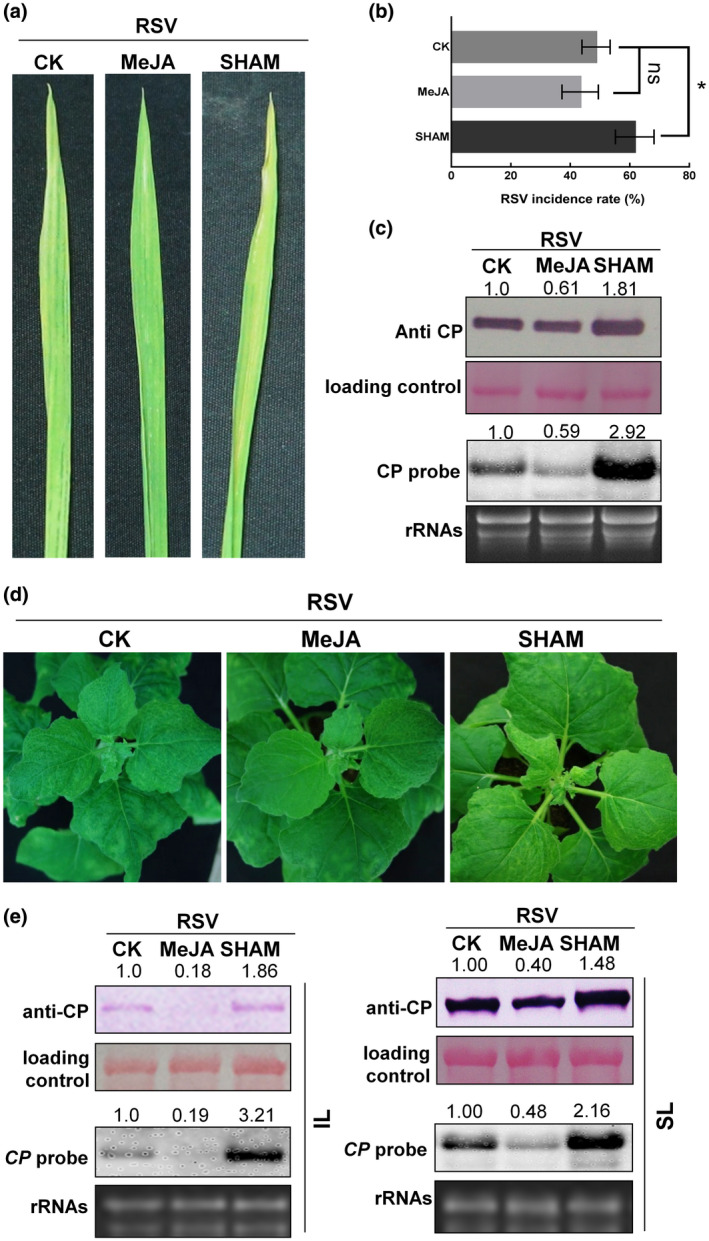FIGURE 2.

The jasmonic acid (JA) pathway plays a defence role against rice stripe virus (RSV). (a) RSV symptoms on rice plants treated with methyl jasmonate (MeJA) and salicylhydroxamic acid (SHAM) (an inhibitor of the JA pathway) at 25 days postinfection (dpi). 0.1% ethanol was used as the control (CK). (b) The incidence of RSV on MeJA‐, SHAM‐, and 0.1% ethanol (CK)‐treated rice plants at 25 dpi. The percentage of plants infected with RSV (incidence) was determined by reverse transcription‐PCR at 25 dpi. Error bars show the mean ± SD of three replicates (at least 30 plants per replicate). A two‐sample unequal variance directional Student's t test was used to test the significance of the differences (*p < .05; n.s., not significant). (c) Western and northern blotting results showing the accumulation levels of RSV coat protein (CP) and viral RNA, respectively, in rice plants treated with MeJA or SHAM. (d) RSV symptoms on Nicotiana benthamiana plants treated with MeJA or SHAM. (e) Western and northern blotting results showing the accumulation levels of RSV CP and viral RNA, respectively, in the inoculated leaves (IL) and systemically infected leaves (SL) of N. benthamiana plants treated with MeJA or SHAM. Anti‐CP, RSV CP antibody was used in western blot to detect the protein level of RSV CP. Ponceau S‐stained RuBisCO was used as the loading control. CP probe, the partial sequence of RSV CP gene labelled with digoxigenin was used in northern blot to detect the accumulation of viral RNA. Ethidium bromide‐stained total RNAs was used as the loading control in northern blot. The relative intensity of the blot signal quantified by ImageJ is shown above the lanes
